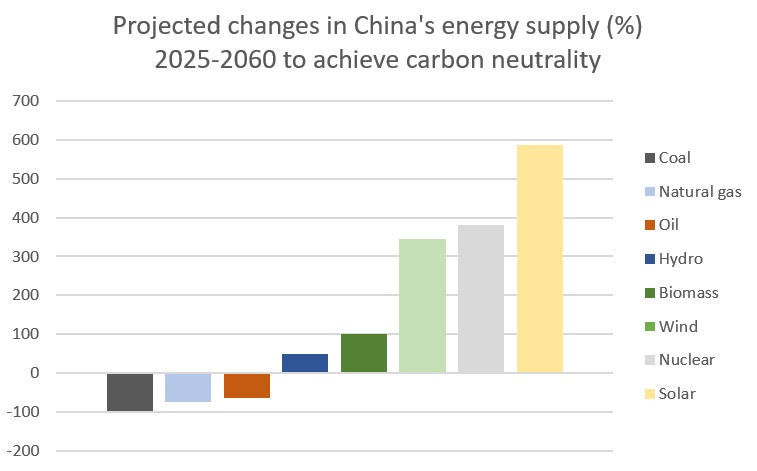. @BloombergQuint has a fascinating report on the plan from Tsinghua University’s Institute of Energy, Environment and Economy, showing how China could achieve its ambition for carbon neutrality by 2060. I made this chart showing the numbers in the piece. https://www.bloombergquint.com/onweb/china-s-top-climate-scientists-lay-out-road-map-to-hit-2060-goal">https://www.bloombergquint.com/onweb/chi...
Here are the percentage changes projected for each energy source over 2025-2060. One of the most noteworthy points: the second-fastest growth comes from nuclear power. Its growth rate is behind solar, but a little ahead of wind
Coal is down 96%, as you might expect, but oil and gas are still around, although only 8% and 3% of the 2060 energy mix respectively. Gas falls even faster than oil: down 75%, compared to a 65% drop for oil consumption
One other point: total energy use is down by about 20% from 2025 levels. None of these changes look impossible, but they will require a committed and sustained effort to get there
If there is any country in the world where massive investment in nuclear power makes sense for decarbonisation, it is China. It has the track record, the size to make economies of scale a real possibility, and the ability to ignore cost issues that deter investor-owned utilities
The energy security implications of heavy investment in nuclear power, reducing demand for imports of both oil and gas through electrification of transport and heating, would also appeal to China’s government

 Read on Twitter
Read on Twitter



